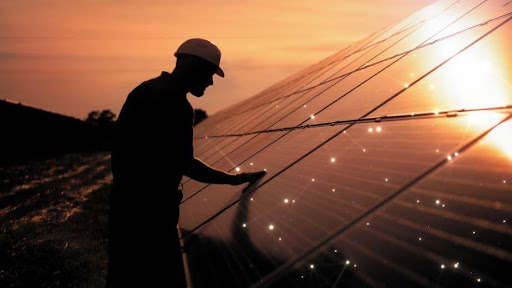
Only a few years ago, sustainable living and reducing carbon footprints were admirable but lofty goals for the average homeowner. Today, however, improvements in the sector mean it is now more of a possibility. Of course, transitioning to solar power still requires a significant investment. Navigating the transition to a solar-powered home still involves careful planning and consideration of various factors. This comprehensive guide outlines the essential steps, considerations, and innovations to ensure a smooth and successful transition.
Innovations in Solar Technology
As technology continues to evolve, innovative solutions emerge to enhance the efficiency and reliability of solar power systems.
One notable innovation in the solar industry is the development of smart inverters and monitoring systems. These devices enhance efficiency and system performance. They enable real-time monitoring of energy production and consumption. In addition, they can perform remote diagnostics and troubleshooting.
Just because the energy is always there does not mean it cannot be harnessed efficiently. With data analytics and automation, homeowners can optimize their solar systems. These bring the benefits of prolonging equipment life, maximizing efficiency, and saving money.
Solar batteries
Most solar-powered homes use lithium-ion inverters or cells for power storage. They work well, but solar batteries are designed specifically to store solar energy. Click on this page to learn more about solar batteries and their use in storing energy from solar arrays.
By integrating a solar battery into your system, you can maximize self-consumption and reduce reliance on the grid. In addition, they are compatible with monitoring and control systems to allow for remote management of energy storage.
Energy Independence With Solar Power
Private solar power is widely seen as a pivotal step towards a greener future. For homeowners, harnessing the sun’s abundant energy is beneficial in multiple ways. It not only reduces reliance on fossil fuels but also offers long-term cost savings and energy independence. Innovative technologies like solar batteries and more efficient cells mean that costs will continue to go down. Here is a simple guide to planning and accomplishing a switch to independent solar power:
Initial Steps and Preliminary Actions
The first step is asking and answering the question of viability. A home might not have solar power needs yet, or its requirements might be too costly. It is important to consult with professionals and conduct a practical assessment of the home’s suitability for solar power.
Even the roof’s orientation, tilt, and shading may significantly affect a home’s solar potential. Ideally, roofs facing south with minimal shading throughout the day are optimal for solar installation. Additionally, the structural integrity of the roof must be ensured to support the weight of the solar panels.
Legal Matters Need Addressing
Some areas have regulations concerning the fitting of solar panels, not to mention HOA groups. In any case, permits will likely be necessary from one authority or another before solar panels can be fitted on a house.
Some places may have specific requirements and incentives, such as tax credits, rebates, or net metering policies. These can significantly impact the feasibility and cost-effectiveness of solar adoption. Consulting with local solar providers or government agencies is important.
Measuring Optimal Capacity and Energy Requirements
Once permits are obtained, an in-depth analysis can follow. Determining the optimal capacity for your solar system is more than just counting how many appliances or outlets there are. It involves assessing the household’s energy consumption patterns. Next is setting realistic goals for energy production. A good place to start is by looking at recent utility bills from the past. Other important factors include seasonal variations, appliance efficiency, and future changes in energy consumption.
Once you have a clear understanding of your energy needs, it is easier to put together a system tailored to meet your requirements. Considering roof area, available sunlight, energy requirements, and budget constraints in the configuration of your solar array. There are online solar calculators that take such data and give an estimate for the best fit. Or consult with professionals to fine-tune the system size and potential energy production based on your location and specific conditions.
Maintenance and Long-Term Considerations
Once your solar system is installed, continuous maintenance and monitoring are essential. These seemingly mundane tasks ensure optimal performance and longevity. The solar panels themselves may require minimal maintenance, but batteries are a deteriorating asset. As such, regular inspections, cleaning, and system checks are recommended to prevent issues and maintain efficiency.
Take into Account Return on Investment during Financial Considerations
For some, the upfront cost of a solar installation may still seem daunting. It is essential to consider the long-term financial benefits of making an investment in solar power. Energy savings, incentives, system lifespan, and resale value will eventually offset the initial cost. In addition to reducing monthly utility bills, solar systems can increase the value of a home. They also provide protection against future energy price hikes.
Take advantage of available financial incentives and financing options to make solar more affordable. Many governments also offer incentives that can significantly offset the initial investment, making solar more accessible to homeowners. Timelines may vary depending on factors such as system size, location, and energy prices. Still, most solar installations typically pay for themselves within 5 to 10 years. This does not take into account the guarantee of continued savings and benefits over the system’s lifespan.
Planning for the Future
As with any modern technology, it is important to stay informed about advancements in solar technology and industry best practices. It might not be a case of upgrading regularly, but small improvements can optimize your system or reduce maintenance requirements.
Certainly, transitioning to a solar-powered home is a significant step. It brings sustainability, energy self-sufficiency, and long-term cost savings. The points outlined in this guide are only a broad overview. In the end, homeowners can navigate the transition by careful planning and consulting the right professionals. In any case, solar power can and will power the way to a brighter, greener future for generations to come.

